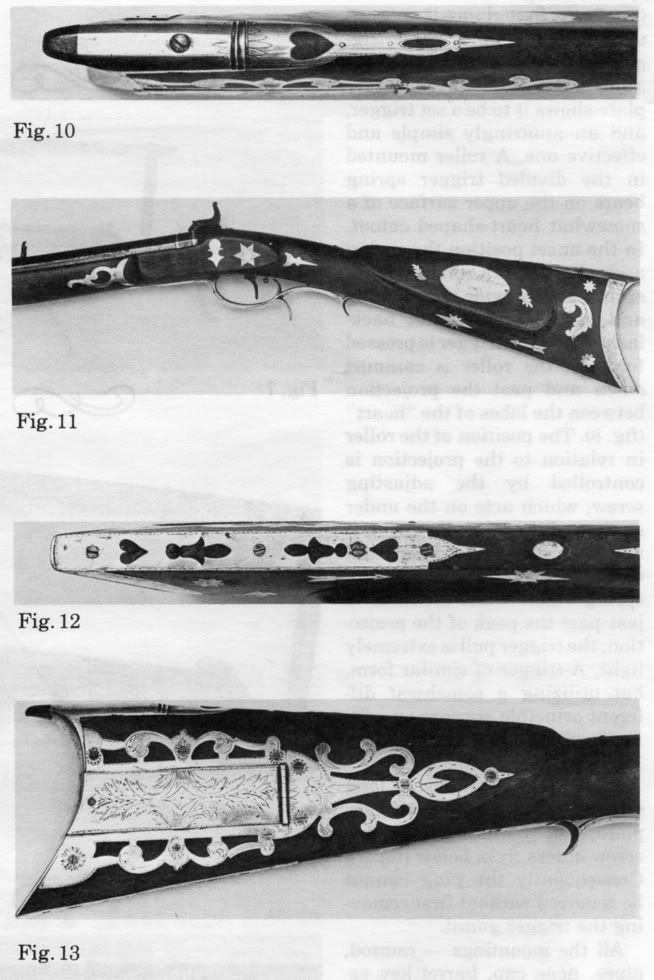50cal.cliff
58 Cal.
I apologize if this is not the appropriate forum and trust it will be moved if needed. However this is a question involving the building of a rifle and what is appropriate for it!
I have been doing research for a build/rebuild of my .50 St. Louis style Hawken, that the stock got busted on.
My intent is too build a rifle using my parts and doing a complete scratch stock. Hopefully when done I will have a much closer representation on an original St. Louis Hawken.
I have noticed that I see very few inlays on the original Hawkens. We use the Hunter's star, the crescent moon,weeping heart, crosses,etc., etc.
So where do these symbols originate from???
I mean there are obvious meanings to most of them but in trying to research the origins of these symbols, I have found little, if any documentation to make the assumption that a buyer would have requested that such a symbol was added to his rifle at purchase!
Would it have been done at purchase or maybe something the owner added at a later time?
I would like to do something with this build to make it uniquely my own but at the same time I want to keep it in the proper character of the time period!
So what are your thoughts to using an inlay on such a rifle????
I have been doing research for a build/rebuild of my .50 St. Louis style Hawken, that the stock got busted on.
My intent is too build a rifle using my parts and doing a complete scratch stock. Hopefully when done I will have a much closer representation on an original St. Louis Hawken.
I have noticed that I see very few inlays on the original Hawkens. We use the Hunter's star, the crescent moon,weeping heart, crosses,etc., etc.
So where do these symbols originate from???
I mean there are obvious meanings to most of them but in trying to research the origins of these symbols, I have found little, if any documentation to make the assumption that a buyer would have requested that such a symbol was added to his rifle at purchase!
Would it have been done at purchase or maybe something the owner added at a later time?
I would like to do something with this build to make it uniquely my own but at the same time I want to keep it in the proper character of the time period!
So what are your thoughts to using an inlay on such a rifle????





